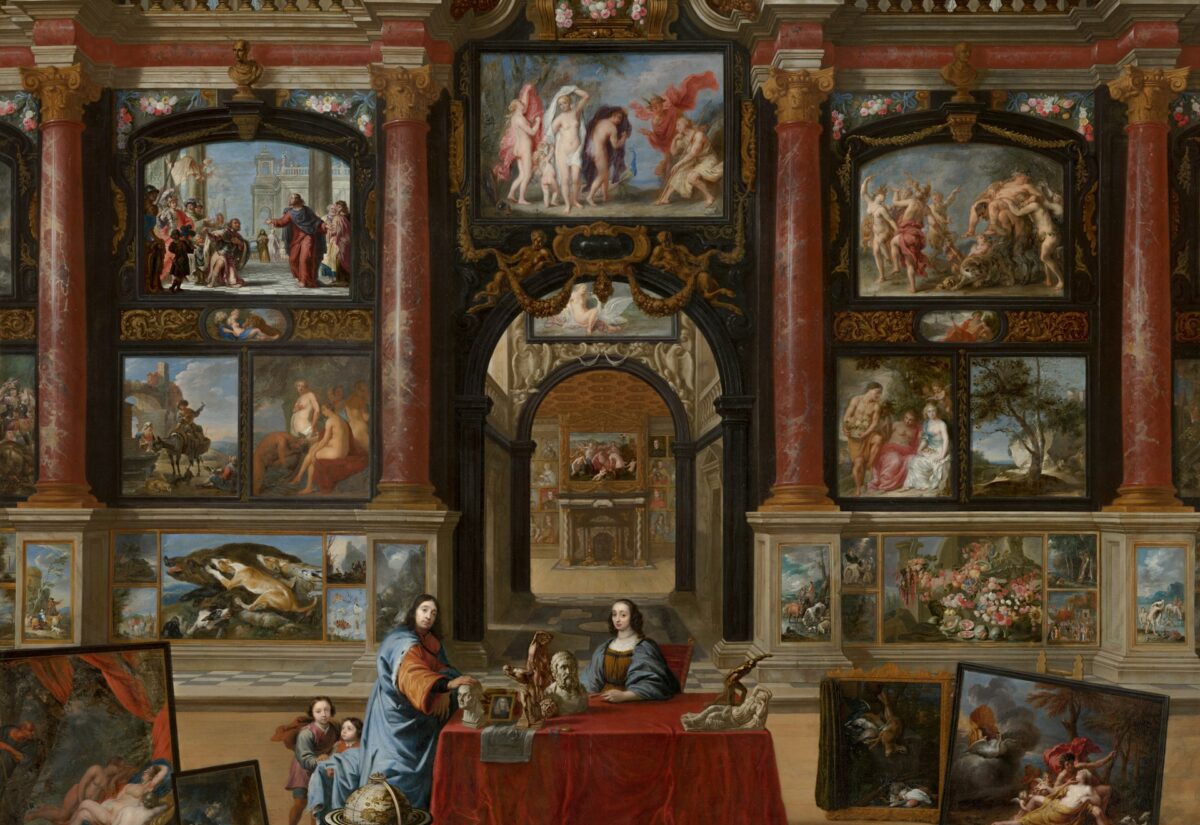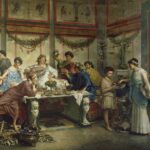Strange Materials Renaissance Artists Used In Their Paints
- Gail Stewart
- June 11, 2025
 Unsplash/Europeana
Unsplash/EuropeanaThe Renaissance produced some of the most iconic works of art the world has ever seen. From Michelangelo’s Sistine Chapel ceiling to Leonardo da Vinci’s enigmatic Mona Lisa, these masterpieces still captivate people centuries later. But beyond the subjects and techniques, there’s something else these artists had in common: they used some truly bizarre ingredients to make their paints.
Before synthetic pigments were invented, painters relied on whatever they could find to get the colours they needed. That meant grinding up minerals, animal parts, plants—and even more surprising materials. Here’s a look at some of the stranger substances Renaissance artists worked with to bring their visions to life.
Ground gemstones
To create the vibrant ultramarine blue seen in many Renaissance paintings, artists used lapis lazuli, a semi-precious stone imported from Afghanistan. It was crushed into a fine powder and mixed with oil or egg yolk to create the pigment.
Because of how rare and expensive lapis lazuli was, ultramarine was more valuable than gold at one point. Only the wealthiest patrons could afford it, which is why it was often reserved for important parts of a painting—like the robes of the Virgin Mary. According to The Paris Review, its use was a status symbol as much as an artistic choice.
Egg yolk
Tempera painting, widely used during the early Renaissance, required a binder to mix with pigments—and egg yolk was the go-to choice. Artists would separate the yolk from the white and blend it with powdered pigment to make quick-drying paint.
Egg yolk gave the paint a luminous quality and helped it adhere well to wood panels. But it also spoiled quickly, so painters had to mix fresh batches constantly. The process may sound more like baking than painting, but it was essential to getting the desired finish.
Animal urine
As grim as it sounds, animal urine was occasionally used in the preparation of pigments. For instance, it was sometimes added to help dissolve or fix dyes, particularly in the case of certain yellows. In some recipes, cow’s urine—especially from animals fed a specific diet—was prized for its ammonia content.
Though not universally applied, it was one of many peculiar attempts at getting colour just right. It’s one of those ingredients that highlight how experimental early colour-making really was—nothing was off-limits.
Ox gall
Ox gall—a fluid taken from the gallbladder of cattle—was used to improve the flow of water-based paints like watercolour or tempera. Mixed in small amounts, it made the paint easier to spread and helped it absorb better into surfaces. Though less common now, ox gall is still used by some traditional artists today. It’s a reminder of just how connected painting once was to farming and animal husbandry. It also underlines the importance of binding agents in making pigments workable.
Crushed insects
The deep red pigment known as carmine or cochineal red was made from cochineal insects. Though it became more prominent in Europe during the colonial period, its use began in the late Renaissance as trade routes expanded. The insects were harvested, dried, and ground into a powder. When mixed with liquid, they created a vivid red that was more intense than earlier alternatives like madder. It’s hard to overstate how valuable, and labour-intensive, this process was.
Lead
Lead white was a staple of Renaissance palettes. Made by exposing strips of lead to vinegar and collecting the resulting flakes, it produced a smooth, opaque white that was ideal for mixing and highlighting. Of course, it was toxic. Artists working with lead-based paints often suffered long-term health issues. But at the time, the danger wasn’t fully understood, and lead remained in use for centuries. It wasn’t until much later that safer, synthetic alternatives replaced it.
Mummy powder
Yes, really. In the late Renaissance, some artists used a brown pigment called “mummy brown,” made by grinding up the remains of actual mummies—usually Egyptian, though occasionally criminals or the poor were used instead.
This pigment was prized for its rich, transparent tone and ease of use in glazes. But by the 19th century, people began questioning the ethics of using human remains in art, and the practice fell out of favour. Still, it’s one of the most disturbing chapters in art history. Weirdly enough, it was a pretty widespread practice!
Charred animal bones
To create a rich, velvety black pigment, artists sometimes used ‘bone black’ or ‘ivory black,’ made by charring animal bones or ivory in a controlled environment. The resulting carbon was ground into a powder and mixed with a binder. This pigment was especially popular for its depth and warmth. Though modern artists now use synthetic versions, the traditional process involved an actual bone furnace. It’s a haunting reminder of how closely art and death were intertwined.
Verdigris
Verdigris was a bright green pigment created by exposing copper plates to acetic acid (often vinegar) and scraping off the corrosion that formed. It was used to give a vivid green in everything from drapery to background foliage. Unfortunately, it didn’t age well—it could darken, crack, or discolour over time. And it was toxic to boot. Still, for artists wanting a particular shade of green, verdigris was worth the gamble.
Dragon’s blood
Despite the name, this wasn’t drawn from mythical creatures. Dragon’s blood is a resin obtained from the rattan palm and was used in some Renaissance paint recipes to add a red tint. It wasn’t always stable and tended to fade with time, but its exotic name and rich colour made it appealing. It was also used in medicine and varnishes, making it a multipurpose—but finicky—material.
The colours that brought Renaissance art to life didn’t come from neat little tubes—they came from farms, mines, animals, and sometimes even human remains. These strange ingredients were the tools of the trade, and they speak to the resourcefulness—and, at times, the questionable ethics—of early artists. Next time you’re admiring a Renaissance masterpiece, it’s worth remembering just how much grit, experimentation, and bizarre sourcing went into every brushstroke.



